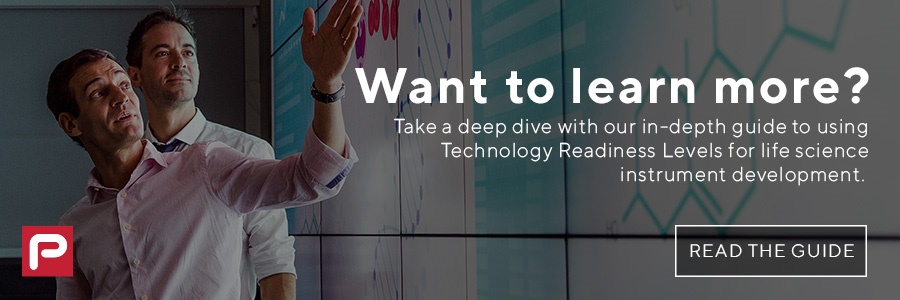Matt Ferris has a PhD in bioanalytical chemistry and more than 15 years of experience leading instrument development, product management and market development teams at life sciences startups and large corporations. As a Life Sciences Technology Manager, Matt works to ensure all Plexus functions have an understanding and appreciation of the customer’s technology and application to help ensure success in Plexus’ commitment to flawless execution.
Q: With the increasing complexity of instrument solutions in the life sciences, how do you scope projects coming into Plexus?
A: This increasing complexity requires a systems level approach and a relatively quick, but accurate, evaluation of the technology maturity to properly scope projects and set realistic expectations with a customer. At Plexus, we’ve adopted the Technology Readiness Level (TRL) framework to help scope complex life science products.
The TRL framework was developed by NASA in the 1970s, but has found more widespread adoption in recent years for a broad range of technology sectors, including the life sciences. It is an excellent tool to quantitatively assess the maturity level of a particular technology, using a scale from 1 to 9, where 1 is an idea and 9 is a fully commercialized product being used by customers. The framework can be applied to the overall system and to sub-systems to create visibility for resource planning.
Q: Can you tell us more about how the TRL framework helps scope projects?
A: Because TRL is an accepted, third-party standard, it provides nomenclature and a framework to help remove ambiguity and emotion from technology maturity assessments. TRL is quite helpful in driving more efficient alignment with internal teams and with the customer. Everyone can see and understand the reality of their technology’s maturity and the work remaining to move their product to a TRL 9.
The TRL frameworks is also a good tool to inform planning. There are published data showing that product development timelines and budgets are more likely to slip, and slip further, for earlier TRL projects. Therefore, we’re able use TRL assessments as a project planning and customer communication input.
Q: Are there any caveats or things to be aware of when considering the TRL framework?
A: The TRL framework is quite detailed and involved. We’re using a simplified version for project scoping. As with most processes, the devil can be in the details — if you’re not careful, simplified TRL frameworks can lose subtleties that are important. For example, I’ve seen customers use a TRL framework to assess their technology maturity at a high level, but they’ve neglected to consider quality or regulatory requirements. Their overall technology was actually much earlier in the TRL than they thought. It’s a very valuable framework, but you should always use caution when applying any simplified process to evaluate a complex product or system.
